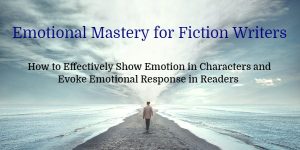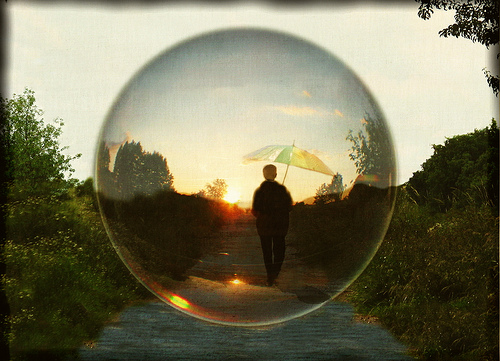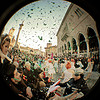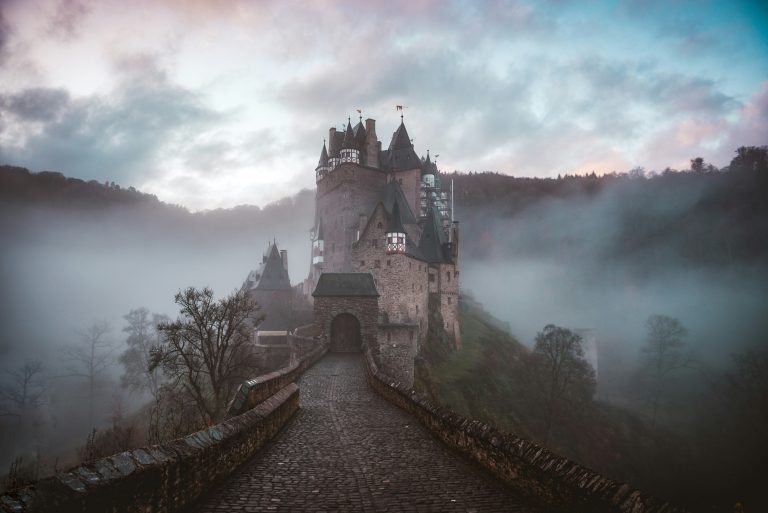The Emotional Power of Connected Settings
Chances are, you’ve heard of deep point of view. Imagine a camera lens that zooms in for a close-up; deep POV is when the description filters directly through the point-of-view character (usually the protagonist) on a deep, emotional level.
When readers see what he sees and feel what he feels, it allows for intimate characterization and creates a shared experience in which the story comes alive through the character’s senses, thoughts, beliefs, emotional focus, and judgments.
Not every story uses deep POV, but all writers work to create a level of closeness between the character and reader, which requires a deft hand to bring about. The setting is the story element that facilitates this.
Experiencing details from the setting through the protagonist’s emotions and senses makes the reader feel truly part of the story. This means that choosing the right setting for each scene is important to not only help events unfold but increases reader-character connection.
Don’t Opt for Blah Settings
Settings should include an emotional value. This is where the setting has a specific emotional tie to the protagonist and possibly other characters. It holds meaning in some way, or acts as a symbol, charging up the scene. I call these powerful types of settings “connected settings.”
For example, it may be that the setting is symbolic of some past life event and serves as a reminder of what happened and the feelings associated with it. Imagine a character being asked to an important business lunch in the same restaurant where his girlfriend turned down his marriage proposal. Even though time has passed, maybe years, an echo of that hurt and rejection will affect him while he’s there and, in turn, will influence his behavior.
If the setting is someplace neutral to the protagonist and there is no emotional value based on past knowledge or experience, we can still bring one to the forefront by creating mood. This is done by choosing sensory descriptions that reinforce a specific emotion (fear, peacefulness, unease, pride, etc.) that we want the character (and the reader) to feel. Mood can also be created through the use of light and shadow, universal symbolism, weather, and other story elements.
Regardless of whether emotional values are intrinsic or are added via mood, choosing a setting that evokes an emotional response is important, since a character’s feelings about his environment add realism to the scene while drawing readers in. (And if you want to truly become an emotion master, take my online course Emotional Mastery for Fiction Writers!)
Infusing Your Settings with Emotional Value
So how do we go about creating connected settings? The first step is to brainstorm the best setting match for a particular scene. This is achieved by looking at what will happen in the scene and which emotions are at play.
Here’s an exercise to help you:
Think of a scene you need to write.
- First, identify your hero’s scene goal—what must he do, learn, or achieve? What do you want him and the other characters involved to feel?
- Once you know the answers to these questions, imagine five different types of settings where this scene might take place, ones that fit the story and are logical locations for your character to visit.
- Make a list. Often the settings that pop immediately to mind are the most obvious, but with a bit of digging, some more creative and interesting choices can be unearthed.
- Once you have a few options, look at each potential setting in turn and think of how you can describe the location to evoke a specific mood that will make your character’s emotional reactions more potent. Tension can be a factor too. Depending on what is about to happen in the scene, you might want your character to feel off-balance. Or maybe you wish to lull him into a false sense of security so he doesn’t see what’s coming. Either way, the details you pick to describe the setting will help steer his emotions.
- Finally, think about what the character will learn, decide, or do as a result of what happens in the scene. The setting can act as an amplifier for this end result simply by surrounding the character with emotional triggers that will lead him toward that decision or action.
Does your protagonist, for example, have a strong emotional connection to one or both parents (who may still be living or have died before your story starts)? By having your character visit a place that holds powerful memories of that parent, either positive or negative or both, those emotions can drive a scene, and the memories triggered there can induce conflict.
Let’s say your protagonist has just had a huge fight with her mother over the man she plans to marry. She might drive back to her childhood home, or just go sit in the bedroom in her parents’ house in which she spent her childhood. There, she might remember the vicious fights her parents had before they divorced and how painful they were to listen to. She might, at that moment, feel a strong determination to never be like her mother. Or, she may suddenly be afraid to commit to marriage, fearing her marriage may end up just like her parents’.
Then, try this exercise:
- Come up with two choices your character must weigh, both awful. Make the stakes high. Usually a scene like this comes right before the climax.
- Now think up three to five locations you can set your character in that will impact or sway her choice. What will she see? What emotions and thoughts will be triggered?
Choosing a strong setting for the scene and then seeding it with these triggers creates a push-pull effect, one that amplifies a character’s internal struggle. Through the hero’s interaction with the setting, we can home in on the needs, desires, moral beliefs, fears, and personal biases that drive his behavior. How the protagonist reacts to these triggers can allude to past experiences that may still have power over him in the form of emotional wounds.
Go through all your scenes and consider the setting. Consider how you might change or alter your setting to give it more emotional value, to impact your character more strongly. Then dig in and rewrite. You and your readers will be glad you did!
Have you chosen a powerful connected setting for one of your scenes? Share about it in the comments!
 Be sure to check out my online video course Emotional Mastery for Fiction Writers! If you fail to move your readers with your scenes (and settings!), your novel will fail. Learn how to both move readers emotionally and show emotion in characters in a masterful way.
Be sure to check out my online video course Emotional Mastery for Fiction Writers! If you fail to move your readers with your scenes (and settings!), your novel will fail. Learn how to both move readers emotionally and show emotion in characters in a masterful way.
This course, and all my courses at cslakin.teachable.com, come with lifetime access and a 30-day money-back guarantee! AND you can take one module for free, so check it out with no risk or obligation!












I have a couple of settings in my novel connected to emotional moments. One is on the rocky shore of a lake, at the point where large pieces broken off the cliff make an ideal place for my main character to sit. A number of things happen here which bring about a wide range of emotions in her life. The other is a family-type restaurant where other yet connected things happen which are also highly emotional at times. Sometimes these places are simply an opportunity for her to reflect on past and future, other times things happen to move the story forward. Not sure if this is a satisfactory explanation, but without telling the story, it’s the best I can do.